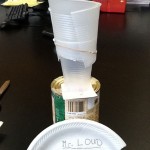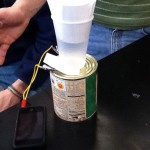New York’s Regents Physics curriculum outlines an introductory algebra-based physics course covering a range of topics from classical mechanics and electricity and magnetism to waves, optics, modern physics, and even touching on the Standard Model. Several commercial textbooks are available supporting this curriculum relatively well, but as the year comes to a close and students prepare for the formal culminating standardized Regents Physics Exam, review books focusing on problem solving make their way into the equation.
 Currently, there are several Regents Physics review books available which are quite well done and that I’m very fond of personally. Over the past few years, I’ve pointed students toward several of these books, and even supplied them for my students in some cases. What students have reported, however, indicates that in many cases they quickly become overwhelmed with the size and layout of the review books, especially given the time constraints they have for review before the exam is given. When most of these books contain a minimum of 400 pages, students begin to view the review process as a daunting endeavor, and therefore never begin. When the shorter books (~ 250 pages) contain hundreds of problems but no included solutions, students see a workbook instead of a resource, and become frustrated when they can’t check their answers and obtain immediate feedback. Regardless of the reason, if students don’t engage in the review book, however well written and complete it may be, its effectiveness is extremely limited.
Currently, there are several Regents Physics review books available which are quite well done and that I’m very fond of personally. Over the past few years, I’ve pointed students toward several of these books, and even supplied them for my students in some cases. What students have reported, however, indicates that in many cases they quickly become overwhelmed with the size and layout of the review books, especially given the time constraints they have for review before the exam is given. When most of these books contain a minimum of 400 pages, students begin to view the review process as a daunting endeavor, and therefore never begin. When the shorter books (~ 250 pages) contain hundreds of problems but no included solutions, students see a workbook instead of a resource, and become frustrated when they can’t check their answers and obtain immediate feedback. Regardless of the reason, if students don’t engage in the review book, however well written and complete it may be, its effectiveness is extremely limited.
Based on student feedback, input from other physics teachers, and requests from several of this year’s crop of Regents Physics students, work has begun on a review book designed to meet the needs of current Regents Physics students in a friendly, engaging, and efficient manner.
So what’s different about this project? First, the book is not intended as a textbook replacement, but rather a summary of just what students need to know to be successful on the Regents Physics Exam, without any extra fluff, similar to an SAT prep book or an AP prep book. There’s a time for pushing further into topics of interest, building deeper understandings, and refining analytical skills — all extremely important in a modern physics classroom, and well supported by a wide variety of modern resources. This book is designed to meet a different need — to assist students in achieving their highest possible score on the Regents Physics Exam in as efficient and straightforward a manner as possible, while reinforcing fundamental physics concepts in as simple and clear a manner as possible.
Second, this book is designed from the ground up to be high-school-student friendly. Target length is 300 pages, fonts are designed for easy readability, and hundreds of sample problems are included immediately following the concepts required, streamlining adoption and specific topic reviews in both traditional and SBG classrooms. Detailed solutions (not just answers) are provided immediately following the questions, utilizing the problem-solving format required for optimal scoring on the Regents Exam. No external answer key required! Fun illustrations and clear diagrams abound throughout the text.
Third, the text is tied in to the APlusPhysics.com website, providing students a pathway to obtain further problem practice with immediate feedback as well as receiving help on tricky concepts in the Regents Physics and Homework Help online forums.
 Target publication date for the APlusPhysics: Your Guide to Regents Physics Essentials is May 2011. Instructors interested in learning more and/or reviewing the text may contact the publisher directly by e-mailing info@sillybeagle.com or through the APlusPhysics website.
Target publication date for the APlusPhysics: Your Guide to Regents Physics Essentials is May 2011. Instructors interested in learning more and/or reviewing the text may contact the publisher directly by e-mailing info@sillybeagle.com or through the APlusPhysics website.










